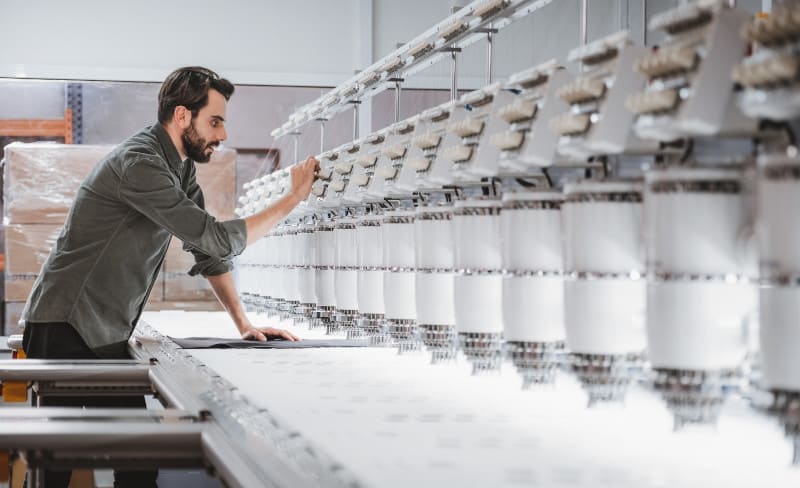Transforming the world of textiles” – this is the motto of the world’s largest trade fair for textile and clothing technology, ITMA 2023 in Milan which took place from June 8 to 14. Shows: The textile industry is undergoing changes. High demands for sustainability and flexibility of machines, enormous cost pressure and a shortage of skilled workers pose great challenges for machine manufacturers and operators. Digitalization can provide a remedy here. offerings
“Digital solutions help our customers improve their total cost of ownership while implementing new business models. By combining operational technology (OT) and information technology (IT) and using the digital twin across the entire machine life cycle, they become more efficient, save engineering time, reduce energy consumption and conserve resources,” explains Falk Vespermann, Global Textile Segment Manager at Lenze.
Lenze sees itself as a partner to its clients and supports them in their digital transformation. The Nupano open automation platform is just one example of this: it forms the bridge between the IT and OT worlds and enables customers to bring applications (apps) to their machines, even without their own IT expertise, thus differentiating themselves in the marketplace. Vespermann adds: “Digitalization is having a huge impact in the world of machine builders in the textile industry. Nupano is a key technology for bringing innovation to the machine and harnessing the potential of digitalization at the machine and plant level in a simple and value-added way. Our customers can offer new digital products, increase the efficiency and sustainability of their textile machines and generate more recurring revenue with their customers.”

Competitive advantages through digital solutions
In addition to Nupano, Lenze presented many other concrete digital offers, innovative solutions such as condition monitoring. No additional sensors are needed for this, because the data is already coming from the unit. Lenze also uses AI for machine optimization and offers an asset performance platform that creates transparency about installed components and ensures better machine availability. The portal is directly linked to the OEM machines. If a fault occurs, the machine can automatically create a ticket so that service technicians are informed at an early stage.
The ticket shows which component is affected, which model or variant is involved, what the serial number is, and how the component was installed in the machine topology. Incorrect information is discarded due to outdated documentation: the information comes directly from the PLC, which always reflects the consistent real state. Since the platform is manufacturer-independent and based on open standards, not only Lenze products can be consulted. “In this way, downtimes can be avoided, production times can be optimized and the OEE (overall equipment efficiency) of the machines can be increased,” says Vespermann, summarizing the benefits.
Perfect transparency for greater sustainability
The planning of a machine is complex and decisive for the subsequent efficiency and sustainability in production. That’s why Lenze offers the right tools for the hardware, but also for the software of the machine. They allow fast and optimal drive design with correct dimensioning and the lowest possible energy consumption.
Precise drive sizing, the use of high-efficiency products and regenerative energy form the basis for optimum energy efficiency and resource conservation. Furthermore, in order to meet the increasing legal requirements, Lenze is already working on the Digital Product Passport (DPP).
In future, the DPP will transparently display all environmentally relevant data about installed components or a machine, and provide the basis for efficient recycling management. The basis is the digital twin, which can be created with the Lenze engineering tool EASY System Designer already in the planning phase. It makes transparent what a machine is made of and how the processed materials can be recycled in specific ways, an important step towards reducing the ecological footprint of the industry.

